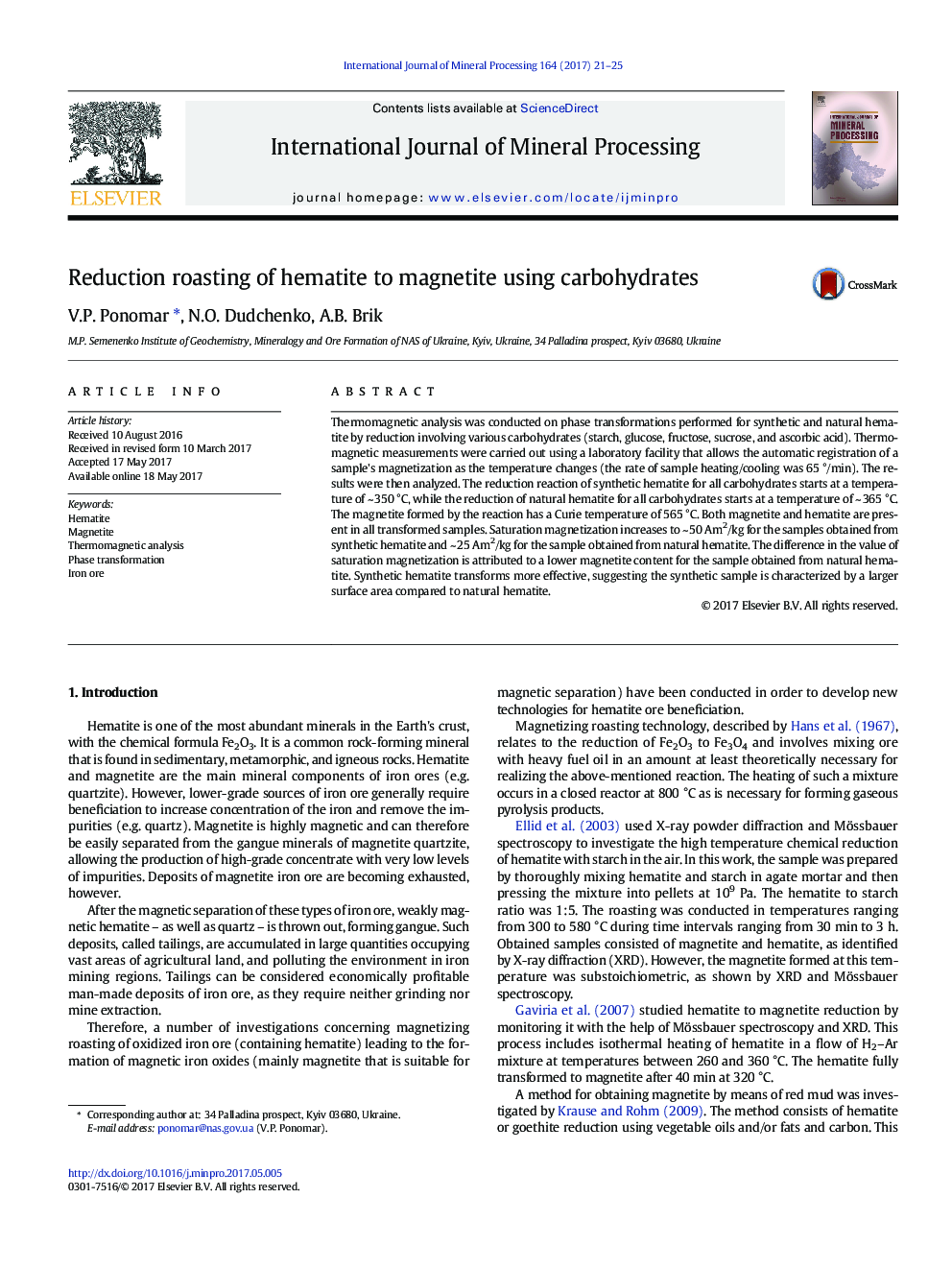| Article ID | Journal | Published Year | Pages | File Type |
|---|---|---|---|---|
| 4769407 | International Journal of Mineral Processing | 2017 | 5 Pages |
Abstract
Thermomagnetic analysis was conducted on phase transformations performed for synthetic and natural hematite by reduction involving various carbohydrates (starch, glucose, fructose, sucrose, and ascorbic acid). Thermomagnetic measurements were carried out using a laboratory facility that allows the automatic registration of a sample's magnetization as the temperature changes (the rate of sample heating/cooling was 65 °/min). The results were then analyzed. The reduction reaction of synthetic hematite for all carbohydrates starts at a temperature of ~ 350 °C, while the reduction of natural hematite for all carbohydrates starts at a temperature of ~ 365 °C. The magnetite formed by the reaction has a Curie temperature of 565 °C. Both magnetite and hematite are present in all transformed samples. Saturation magnetization increases to ~ 50 Am2/kg for the samples obtained from synthetic hematite and ~ 25 Am2/kg for the sample obtained from natural hematite. The difference in the value of saturation magnetization is attributed to a lower magnetite content for the sample obtained from natural hematite. Synthetic hematite transforms more effective, suggesting the synthetic sample is characterized by a larger surface area compared to natural hematite.
Related Topics
Physical Sciences and Engineering
Chemical Engineering
Chemical Engineering (General)
Authors
V.P. Ponomar, N.O. Dudchenko, A.B. Brik,
